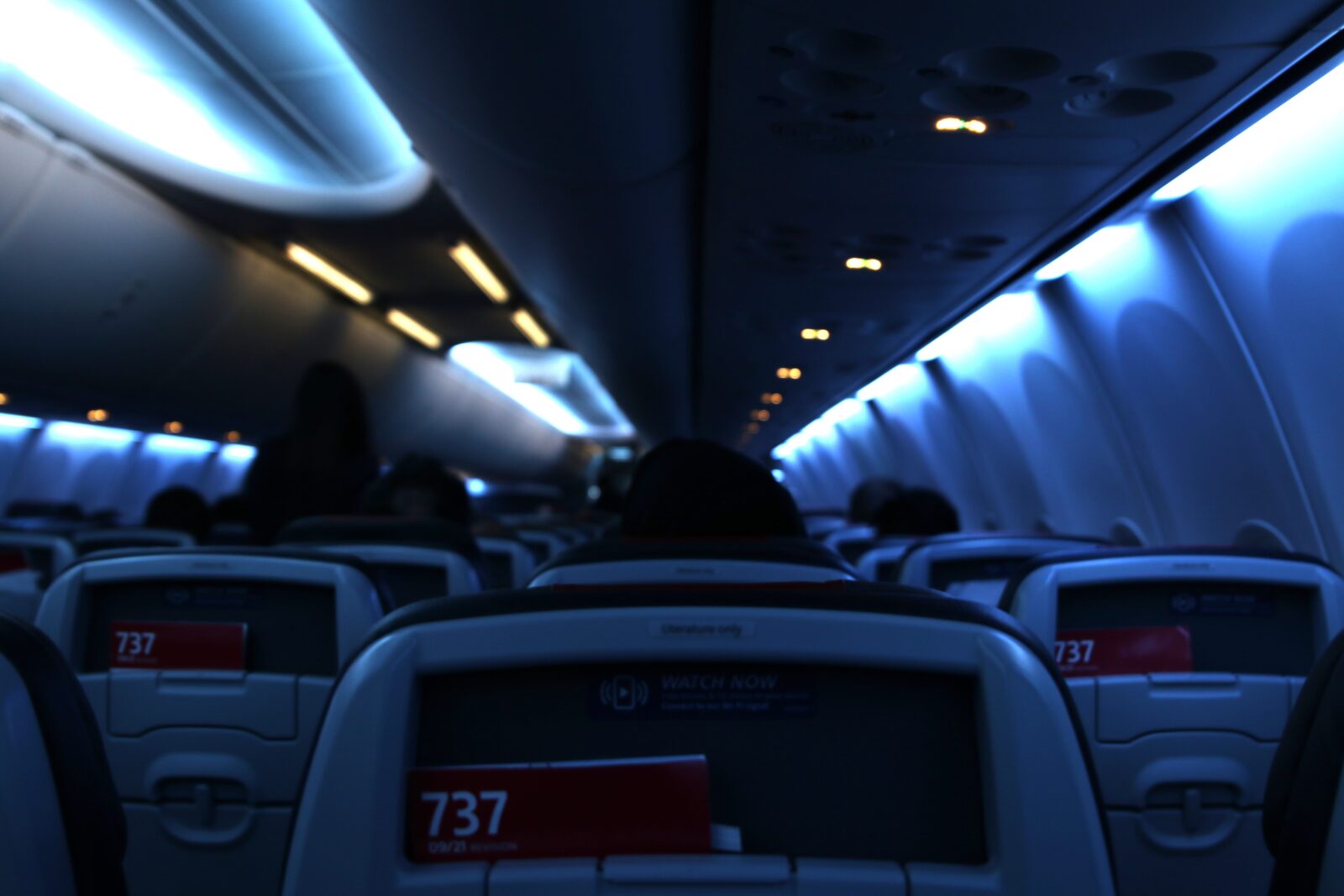
Crew Insider is our series of informative articles that answer some of the most common and less common questions about the aviation industry from the point of view of an industry insider. Our question answerer-in-chief is Mateusz Maszczynski, who has worked in the airline industry for nearly two decades and has honed his expertise in the field through this blog since 2015.
As a flight attendant, I’m fully accustomed to turning off the cabin lights for takeoff and landing during the hours of darkness, and with the nights starting to draw in across the northern hemisphere, it seemed like a good time to explain exactly why cabin crew do this.
As one Southwest Airlines flight attendant wittily explained: “As the day wears on, the makeup wears off, and we look better in dim lighting, so I’m going to dim the lights now… in fact, let’s dim the cabin lights even more.”
Of course, dimming the cabin lights isn’t just about making us look a little better after a hard day’s work… even if the old-fashioned strip lighting that still graces far too many airplanes washes us out even more than a lack of a tan does during the long winter months.
When it comes to flying, it’s probably no surprise that the real reason that cabin lights are dimmed for takeoff and lighting is all to do with safety.
The idea is that by reducing the cabin lighting to something similar to the ambient lighting conditions outside the airplane, our eyes will acclimatize to the darkness and, therefore, we’ll all be better prepared to respond should the worst happen and an emergency evacuation is required.
Think of when you have turned the lights off in a room and struggled to see because your eyes haven’t adjusted to the darkness. Over time, however, your eyes begin to adjust to the lighting level, and you’ll be able to see things in the room a little better.
The same principle applies when flight attendants dim the cabin lighting for takeoff and landing during the hours of darkness. If an evacuation were to be ordered, every second counts, and wasting precious time for our eyesight to adjust to the outside darkness simply isn’t acceptable.
In reverse, the same is true for flights landing during daylight hours when its best for the cabin lights to be kept on so that our eyes aren’t suddenly dazzled by the outside conditions.
Interestingly, however, this rule hasn’t been universally adopted, and in many countries, it’s up to individual airlines to set their rules around cabin lighting conditions for takeoff and landing.
In fact, in response to a consultation by the European Air Safety Agency (EASA) in 2017, Dutch flag carrier KLM said there was no scientific evidence to support the theory that cabin lighting should be adjusted to match outside conditions.
Some airlines choose to turn off pretty much every single light for takeoff and landing during the hours of darkness, save for the ‘no smoking’ and ‘fasten seatbelt’ signs, whereas other carriers opt for dimmed mood lighting.
In many cases, it really is up to the individual carrier to choose how much they dim the cabin lights… if they choose to do so at all.
Then again, this rule is only relevant when airlines require passengers to open their window shades for takeoff and landing. This allows passengers to maintain their situational awareness of what is going on outside and alert the cabin crew should they notice something wrong.
When airlines have this rule in place, it’s really helpful for passengers to be able to see exactly what is going on by ensuring their eyesight is acclimatized to the outside lighting conditions.
Related
Mateusz Maszczynski honed his skills as an international flight attendant at the most prominent airline in the Middle East and has been flying ever since... most recently for a well known European airline. Matt is passionate about the aviation industry and has become an expert in passenger experience and human-centric stories. Always keeping an ear close to the ground, Matt's industry insights, analysis and news coverage is frequently relied upon by some of the biggest names in journalism.







